Expert Advice, General
Preparing for the Stillwater Season – A Spring Fishing How-to Guide by Tom Johannesen
Winter tests even the most patient stillwater angler
Winter is tough on most avid Stillwater anglers as they patiently wait for the ice to leave our numerous interior lakes. The first big decision to make when planning a trip in the new year is which lake to visit first when the lakes start becoming ice-free. This decision is usually based on a lake’s elevation, as the lower lakes tend to become ice-free much sooner than the higher-elevation lakes.
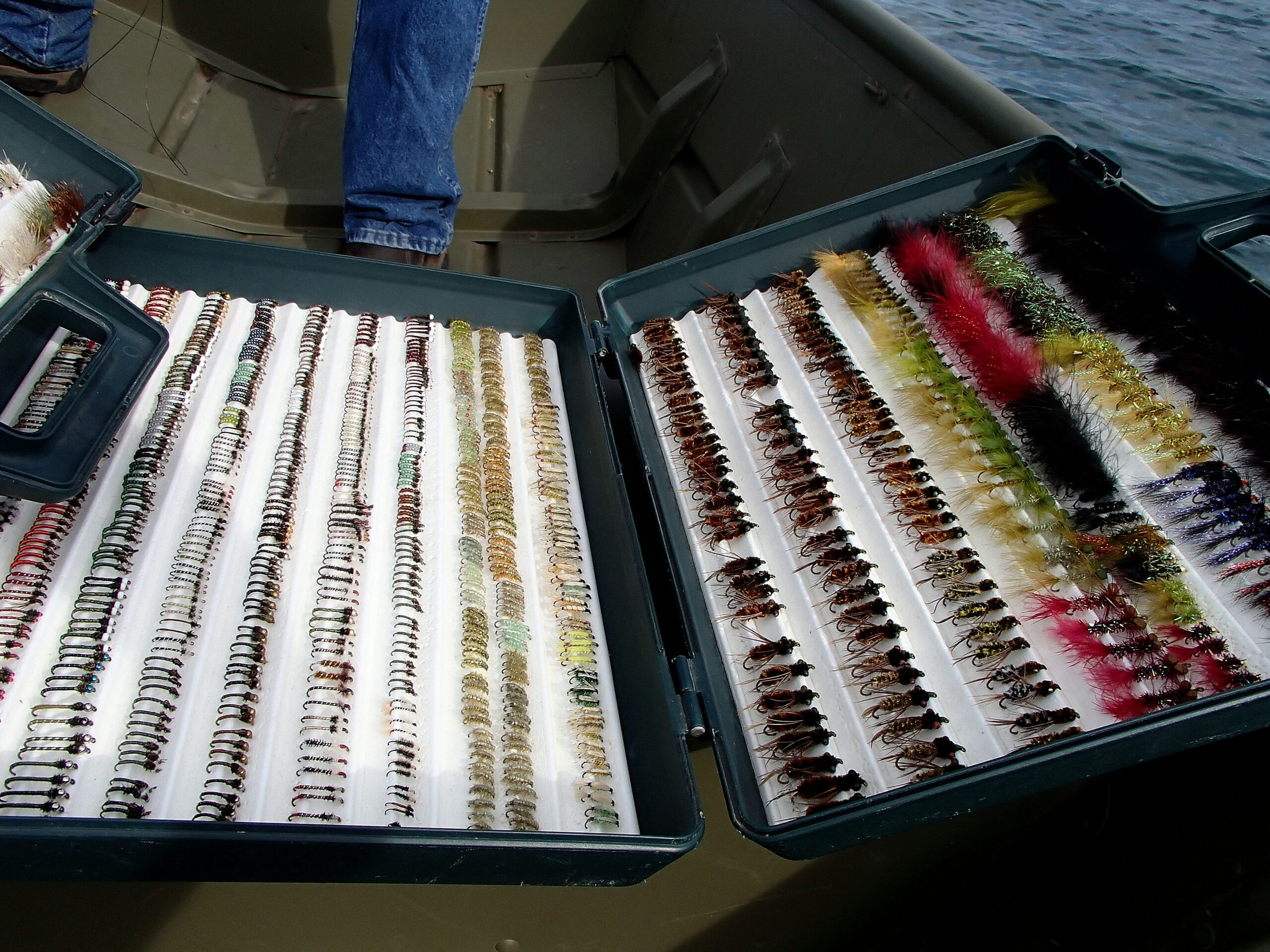
A good selection of flies is essential when fishing in the spring
Fish aren’t afraid to hit the snooze during winter hibernation
During the winter month’s trout slow down and go into a state of hibernation. They stop feeding on their typical aquatic diets including shrimp, leeches, dragons, and damsels and they start feeding on daphnia (zooplankton). For this reason, when the ice first leaves the lakes, it can sometimes be difficult to get fish to take larger insect patterns. This doesn’t mean fish won’t take larger insect imitations, just be prepared to make a lot of casts while trying a variety of patterns before coming across a productive one.
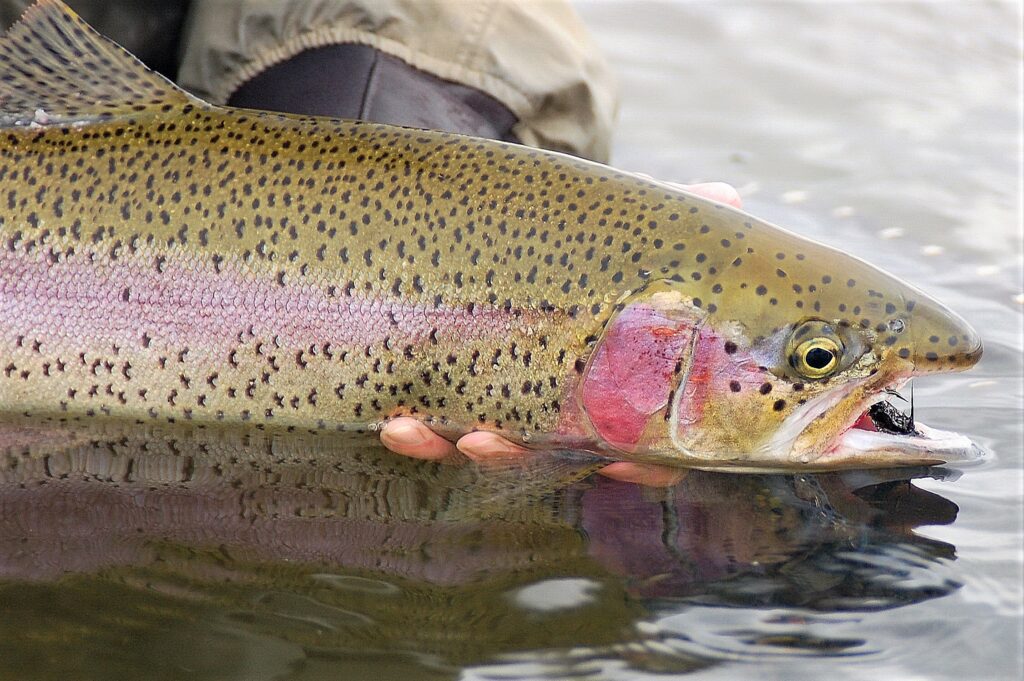
May the strong survive
Throughout the winter, a thick covering of ice and snow prevents any photosynthesis from occurring in our interior lakes. Without sunlight penetrating to the lake’s bottom, plant life that flourishes in shallow water during the open-water period dies off and decomposes. Oxygen is used during the decomposition process and as winter progresses there are decreasing amounts available to support fish and other aquatic life forms. As winter starts winding down there is often only a narrow band of oxygenated water directly below the ice. If the ice stays on a lake too long the results can be devastating. Every year we lose many of our favourite fly-fishing lakes to winterkill.
Shallow water and high elevations
The lakes most prone to winter kill are shallow bodies of water at higher elevations. Lakes that are known to get some degree of kill annually get special attention from the Freshwater Fishing Society of BC. By placing an aerator or two on a lake, oxygen can be pumped into the water to help keep life forms from dying off. Realizing which lakes have sustained winterkill is quite easy to detect as birds arrive at these lakes to feed on all the fish carcasses. When there is a die-off, dead fish can be seen along the shoreline and on the bottom in shallow water. In some cases, a lake only sustains a partial kill as some fish manage to stay in areas that still contain some amounts of oxygen.
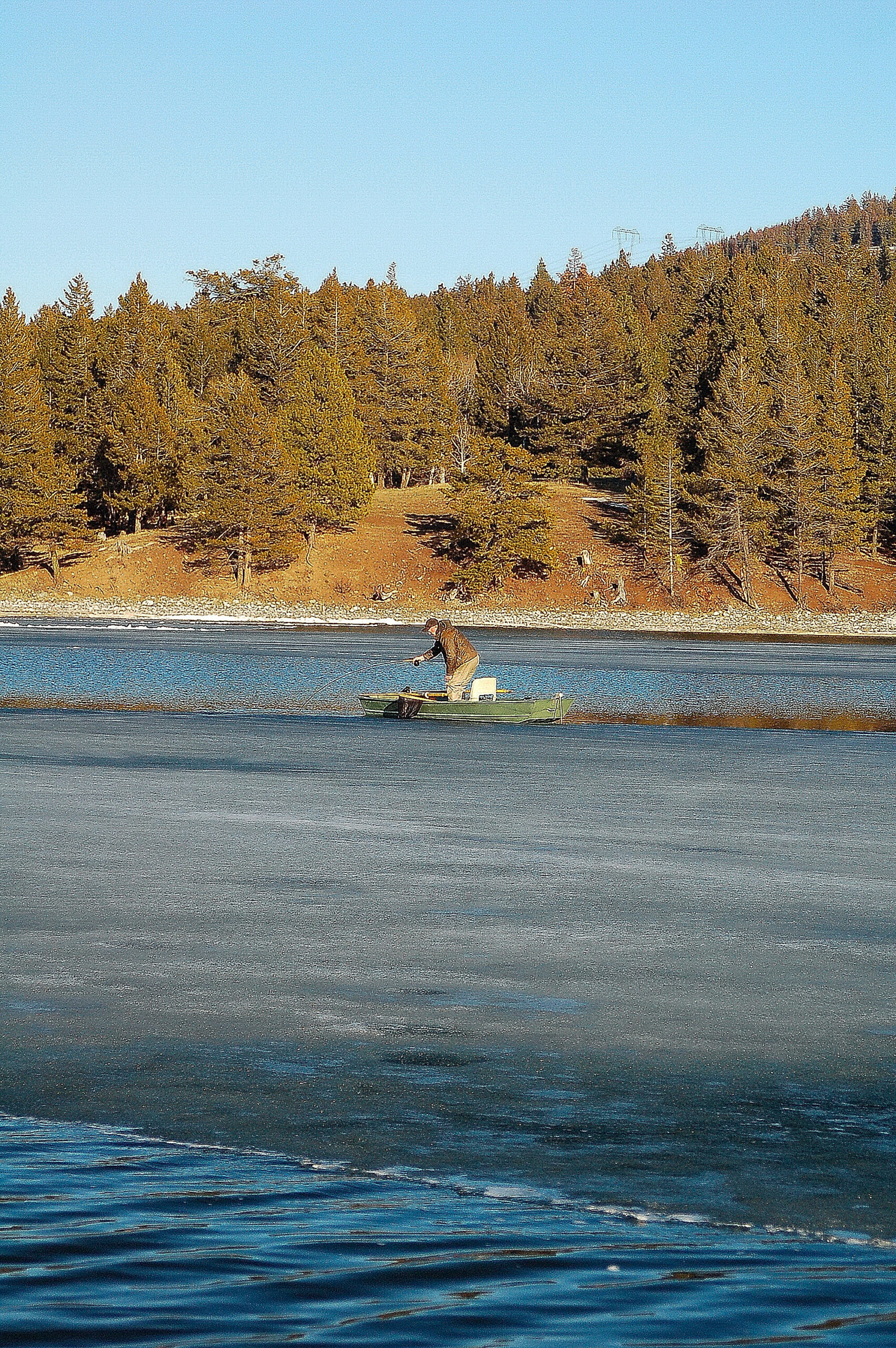
Fishing is still possible even with some ice on the lake!
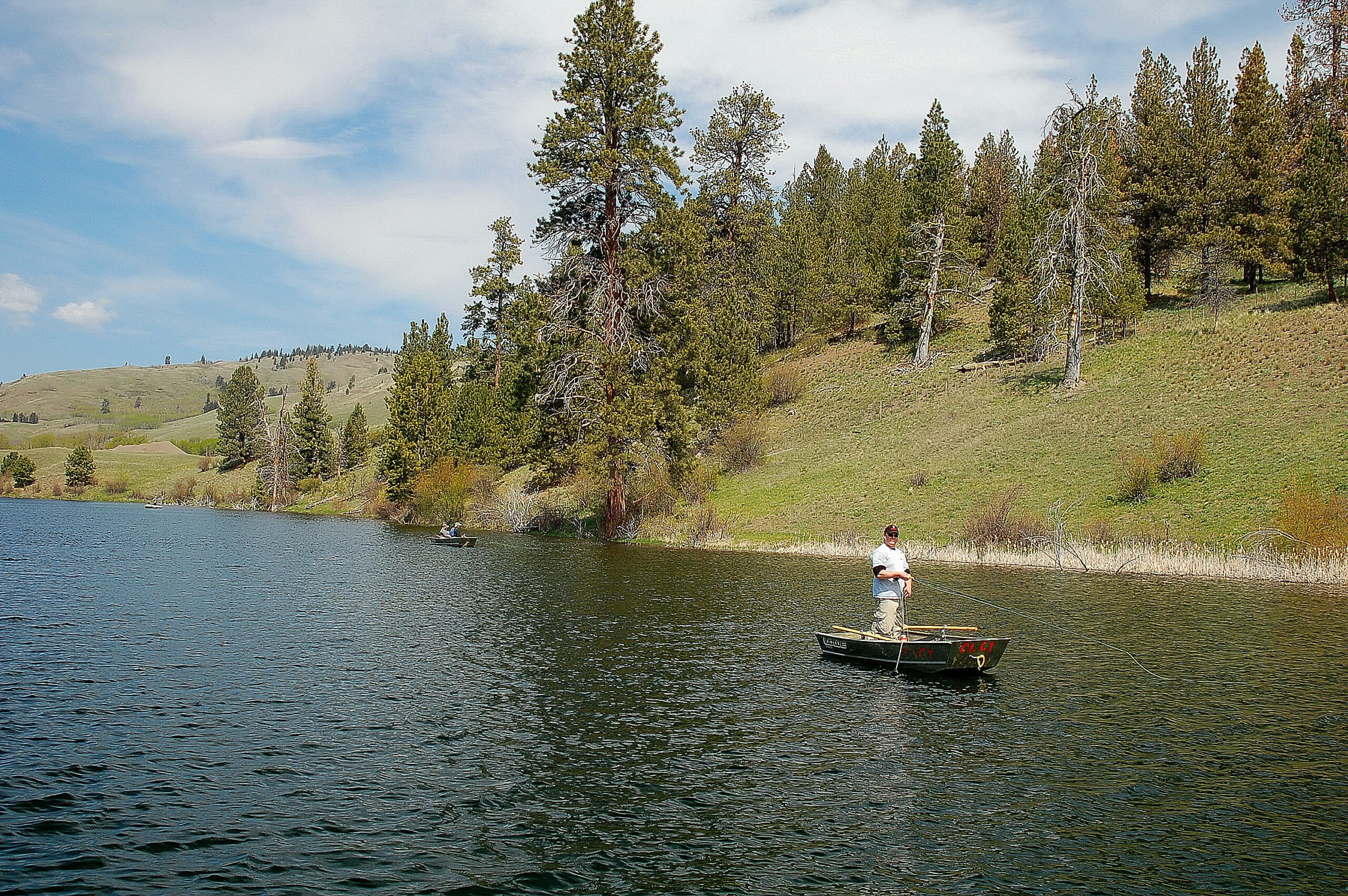
It’s not uncommon to have the whole lake to yourself at the start of stillwater season
The start of turnover
From the time the ice leaves a lake until the start of turnover, fishing can be nothing short of spectacular. This is the time of year that many fly-fishers wait for as they know the biggest fish in a lake can be located feeding on the shoals in just a few feet of water. Once all the ice has left the lake it takes up to two weeks for the spring sun to warm the upper layers of the water to meet the temperature of the lower depths.
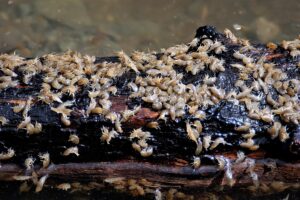
Gammarus shrimps found on the shoreline
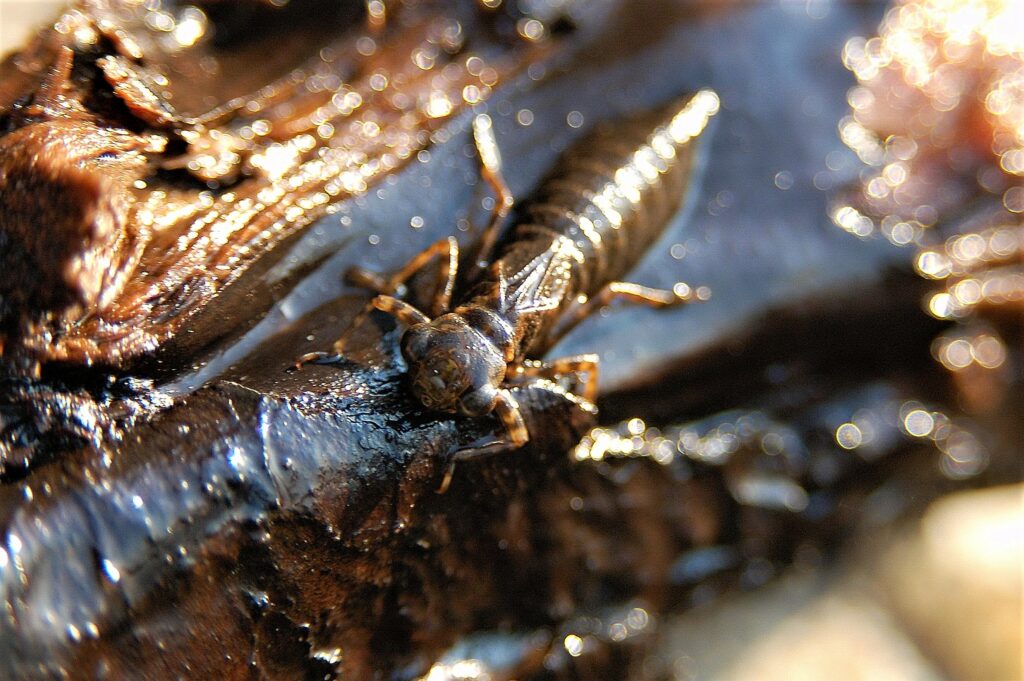
Darner Dragon Fly Nymph
Temperatures start blending
As these temperatures start blending, the lake will go into a state of turnover. When a lake turns over the debris from the bottom floats to the surface in the form of greenish-brown sludge. During turnover trout stop feeding and a lake takes on a pea soup-like appearance. If you arrive at a lake while this is occurring, it’s always best to head to another lake at a different elevation. Turnover will eventually settle, allowing insects to start moving about freely again.
At this time trout go on a feeding frenzy as they try to put back on all the weight they lost over winter. If you hit a lake during this time it’s hard to go wrong with any form of insect imitation as trout feed on anything they can find. During this prime feeding time, I have cleaned fish that had leeches, shrimp, dragons, damsels, and blood worms in their stomachs all at one time.
.
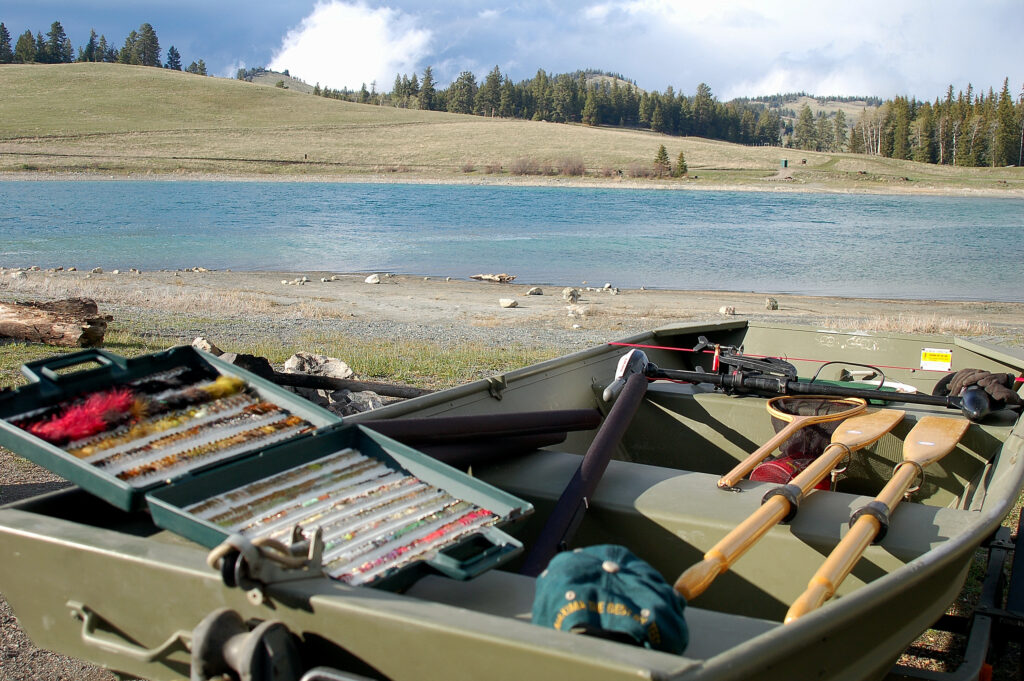
Fly section for spring fishing
When you arrive at a lake in the spring the best advice, I can give any angler is to explore the shoreline to see what insects inhabit the body of water you are about to fish. The few minutes spent exploring will help with fly selection once on the water. The key things to observe include the size, shape, and color of the insects in the lake. While viewing those insect characteristics it is also beneficial to watch how they swim as the movement can be imitated once on the water.
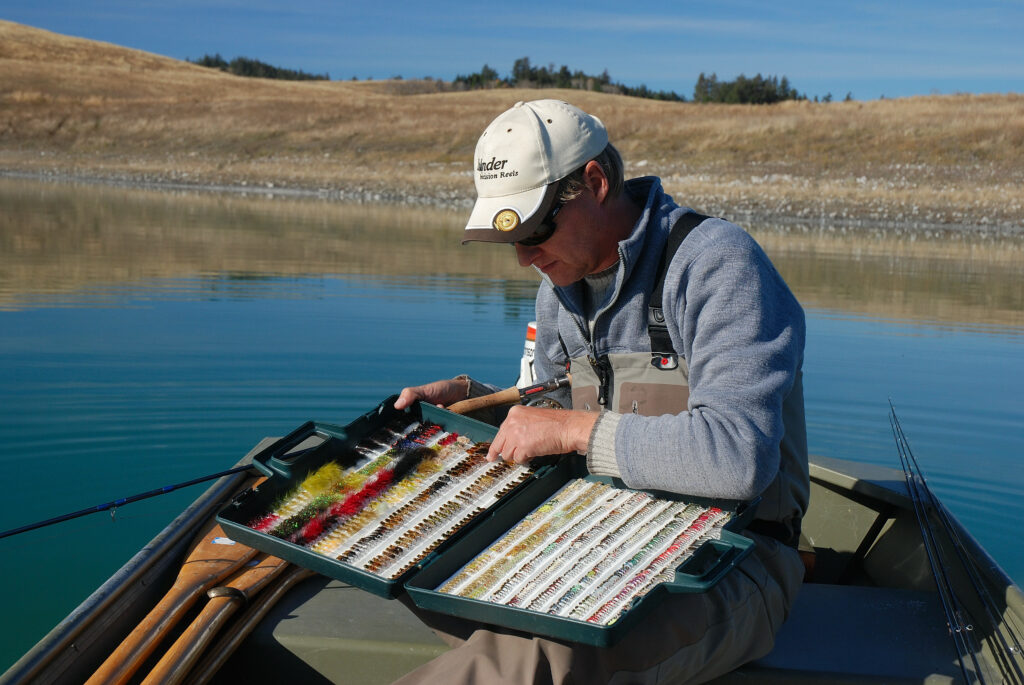
Darner Dragon Nymph – Present in Lakes year-round
One of my most productive patterns to use in the spring is a #8 dark darner dragon nymph. This fly is very recognizable to fish as natural ones are present in lakes year-round.
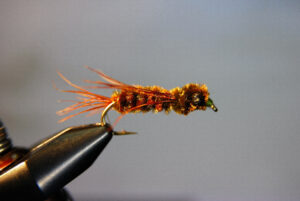
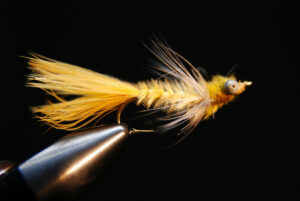
Damselfly Nymph imitation
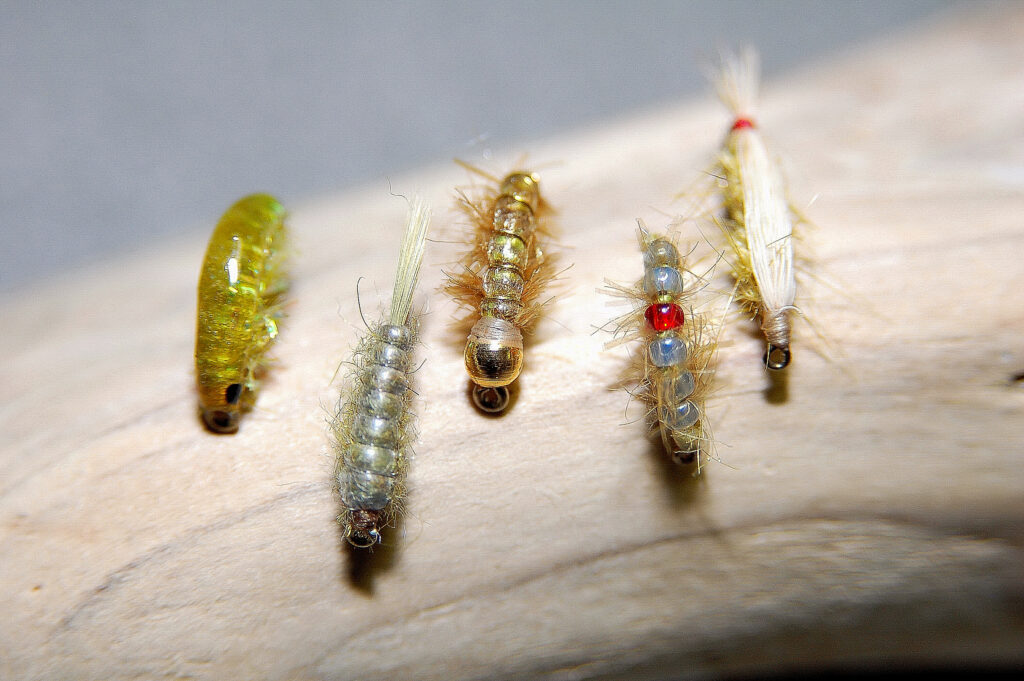
Shrimp patterns can be very productive in spring
Flies worth noting
Other highly productive flies in the spring include leeches, damsels, and water boatman. Once the feeding frenzy starts slowing down then trout dial in on the smaller more abundant insects such as blood worms, chironomids, and shrimp. If the fish are not dialed in on specific insect imitations, then don’t hesitate to experiment with larger attractor patterns as fish often hit these flies out of anger. Over the past decade or so blobs and boobies have gained popularity amongst Stillwater anglers as they strive to catch fish even when they are not actively feeding. Regardless of what patterns worked well in the past, always carry a good selection of flies with you on the boat as feeding habits change by the hour and from lake to lake.
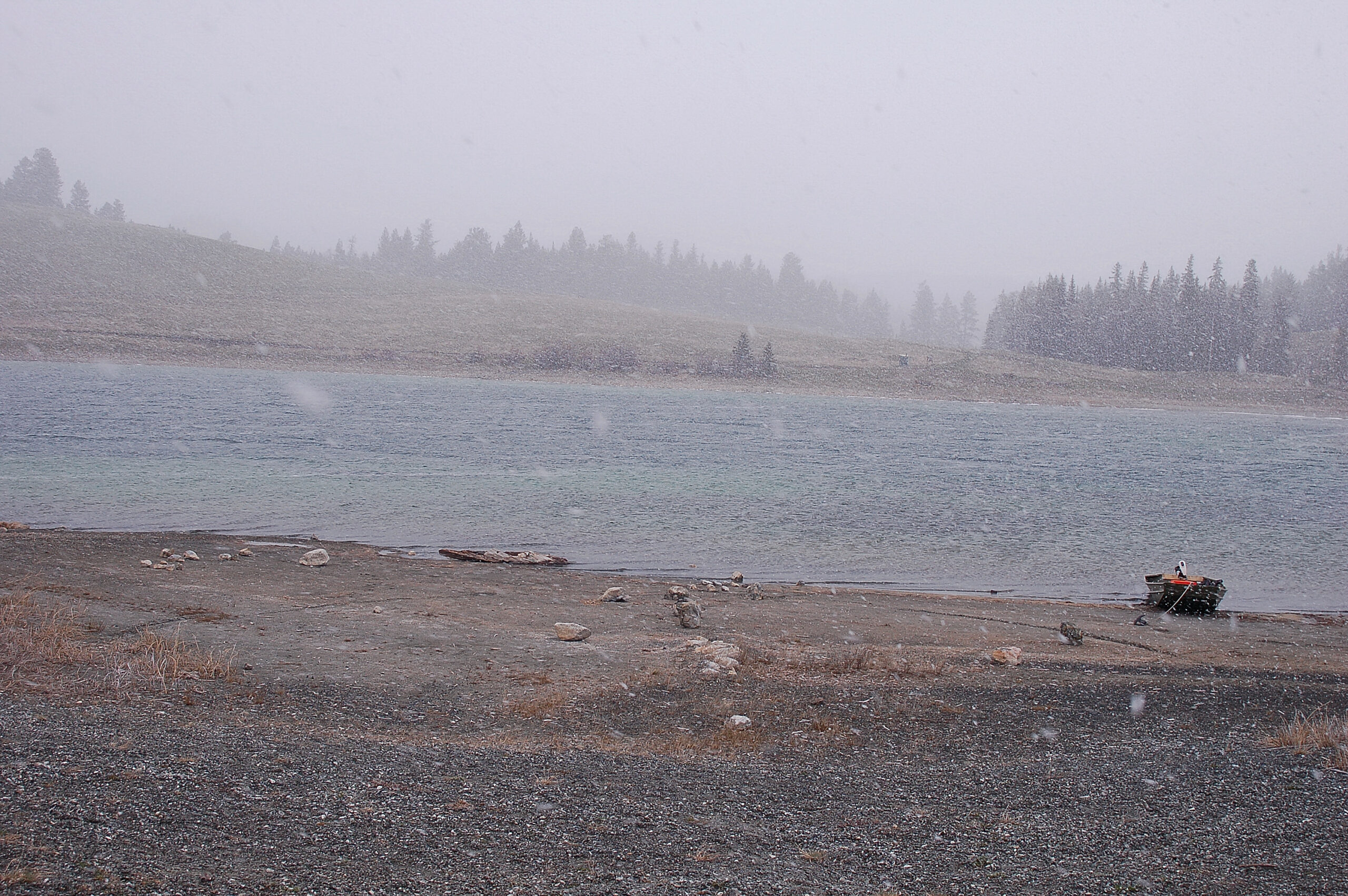
Be prepared for spring weather conditions… whatever they may be
When packing your gear for a spring trip, make sure you are properly prepared for any type of weather conditions. It doesn’t matter how good the fishing is, if you are cold and wet all trip, you’re not going to have a good time.
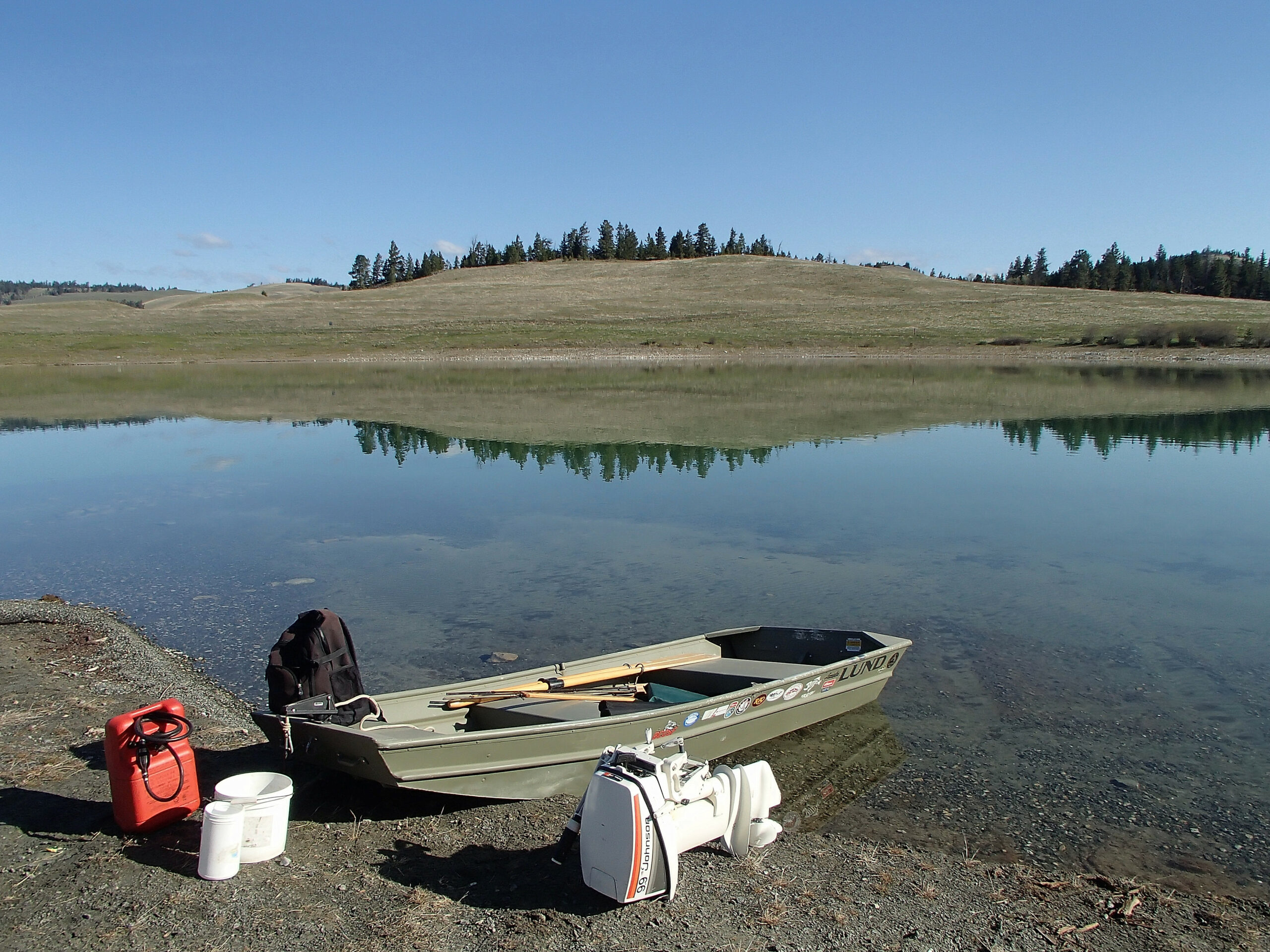
Checklists are essential
I find having a checklist is essential to make sure you don’t arrive at a lake without important items still sitting at home nicely packed away. Always pack for anything Mother Nature can throw at you in the spring as the weather can change drastically by the hour.
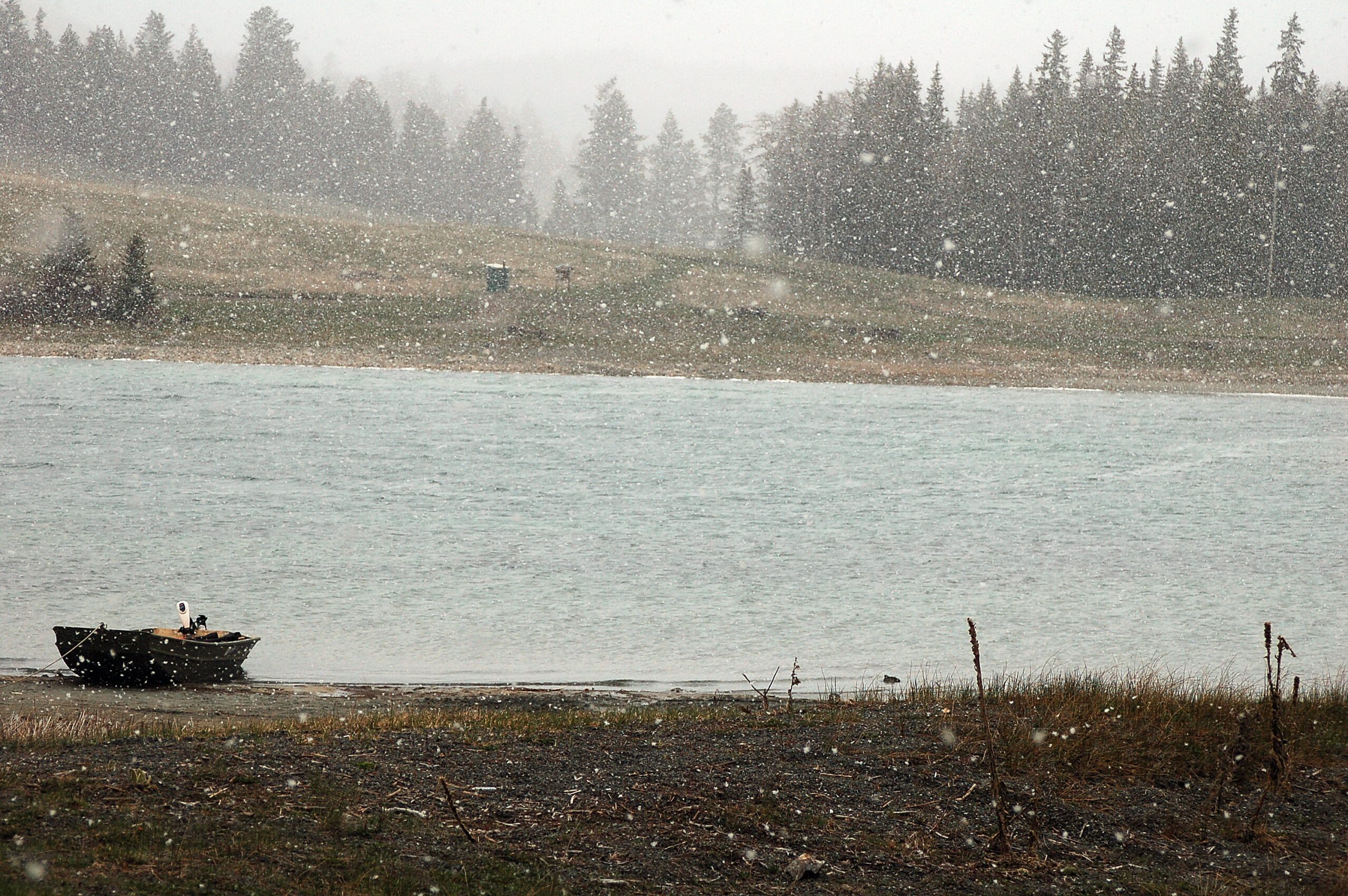
Warm spring weather can change at the drop of a hat
I remember going with a friend one year in early May and he packed shorts and T-shirts as the weather on the Coast had been nice for a long stint. When we arrived in Merritt the weather was also very nice but, in the morning, we woke up to three inches of snow on the ground and the temperature had dropped to -5 C. I lent him what clothes I could spare but my buddy was cold the entire trip as the temperature barely made it above zero for three days. On the bright side, the fishing was good on that trip which made up for the below-average weather temperatures.
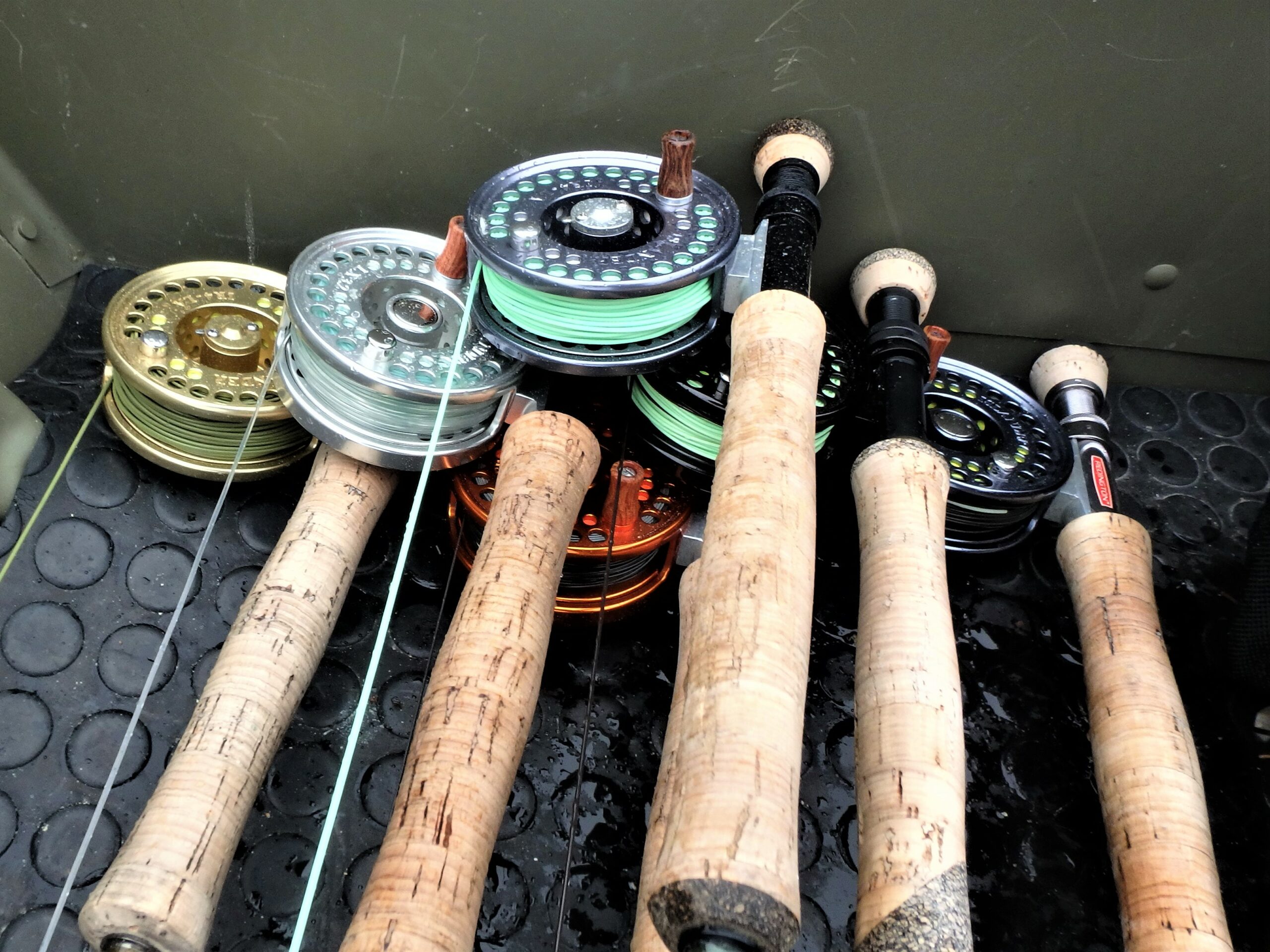
Gearing up for spring fishing
When it comes to selecting the appropriate fishing gear for a spring trip, success is dependent on the weather which means we must be prepared for all conditions. This might seem odd to some, but I usually hit the water with at least four rods set up and ready to go. My logic is I would much rather simply change rods rather than sit there in the cold changing flies every fifteen minutes. I also find I can cover water a lot quicker while searching for fish.
Must-have set-ups
My four must-have set-ups on the boat would include a type 6 sinking line, a type 3 sinking line, a full floating line, and a 10-15ft sink-tip line. With these lines ready to go, I could cover fish in depths from four to forty feet without changing a single fly. When I do bring more than four rods on board, I would also bring a line with a clear sink-tip and a second type 6 sinking line so I can have one tied up with an attractor and one with an actual insect imitation.
Having this many rods on board can be a bit of an inconvenience at times but it does allow me to fish more and change flies a lot less.
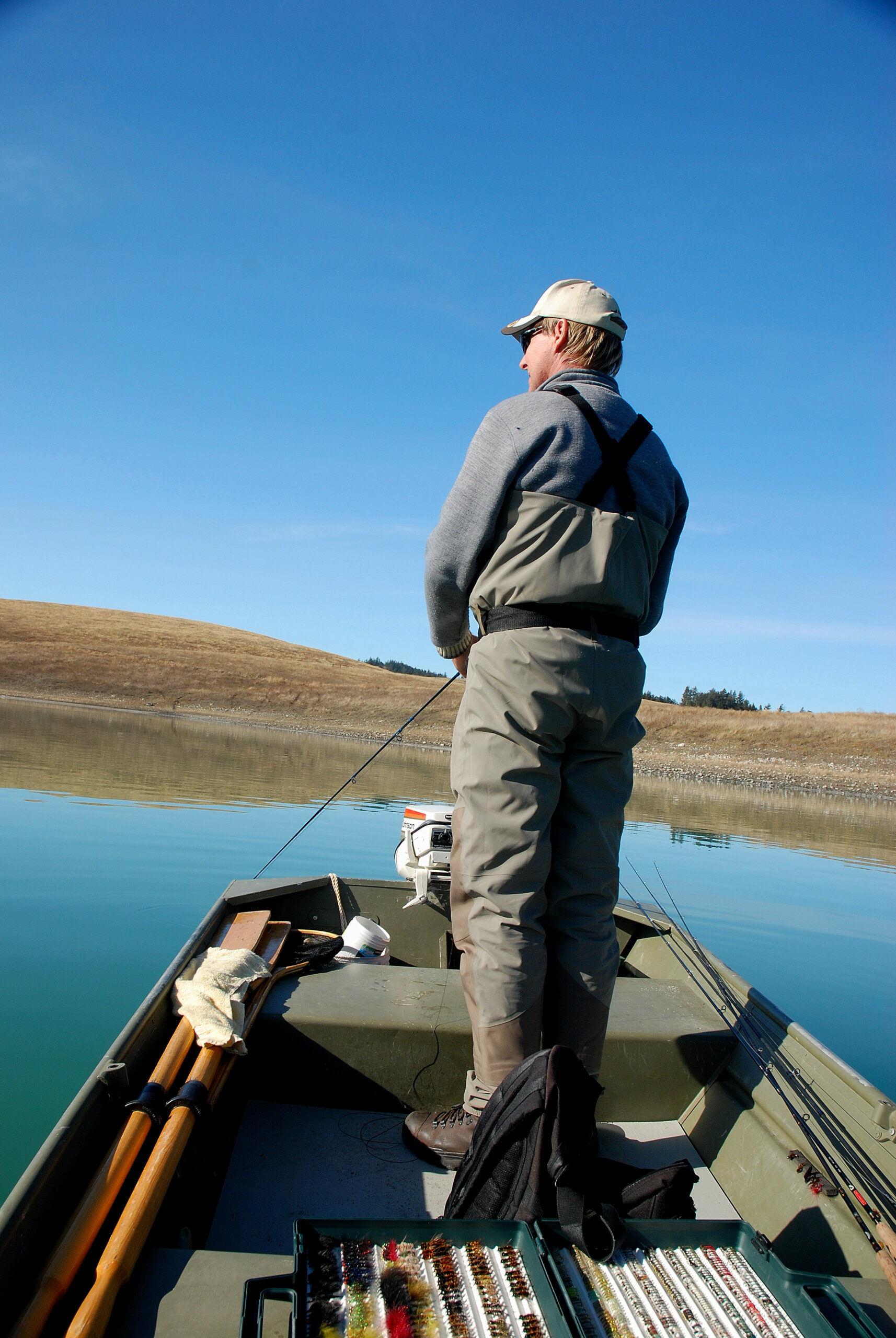
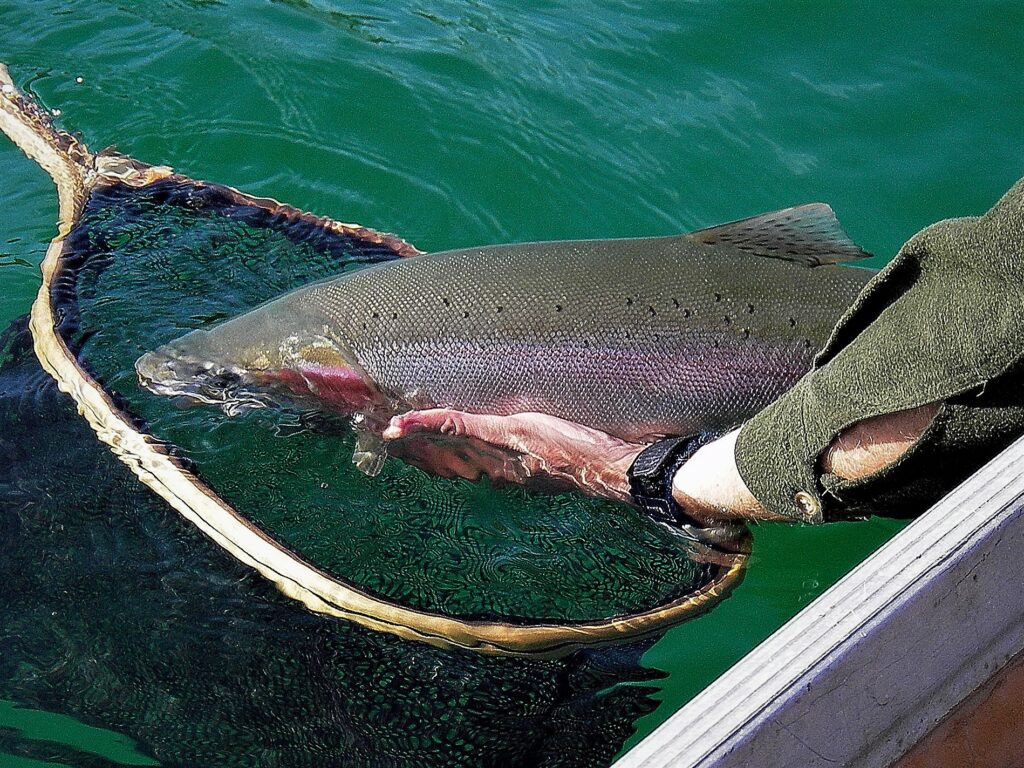
Add early spring fishing to your must-do list!
If you have never fished a lake shortly after ice-off put it on your must-do list. The fishing pressure from other anglers is generally light and you will have the opportunity to hook some real big fish.
Tom Johannesen
Tom Johannesen grew up fishing but at the age of 23 he had his first article published in a British Columbia Federation of Fly Fishers (BCFFF) newsletter and something changed.
Since that first article, Tom has been on a mission to master his craft and to share what he has learned with others. With over 200 articles published in magazines like BC Sport Fishing, BC Outdoors, Outdoor Edge, Canadian Fly Fisher, Home Waters, Reel Angler, Western Angler and Island Fisherman, it’s clear that it’s a mission he takes seriously. He also regularly hosts seminars and tutorials at fly clubs and shops in the hopes of lighting that spark in the next generation.


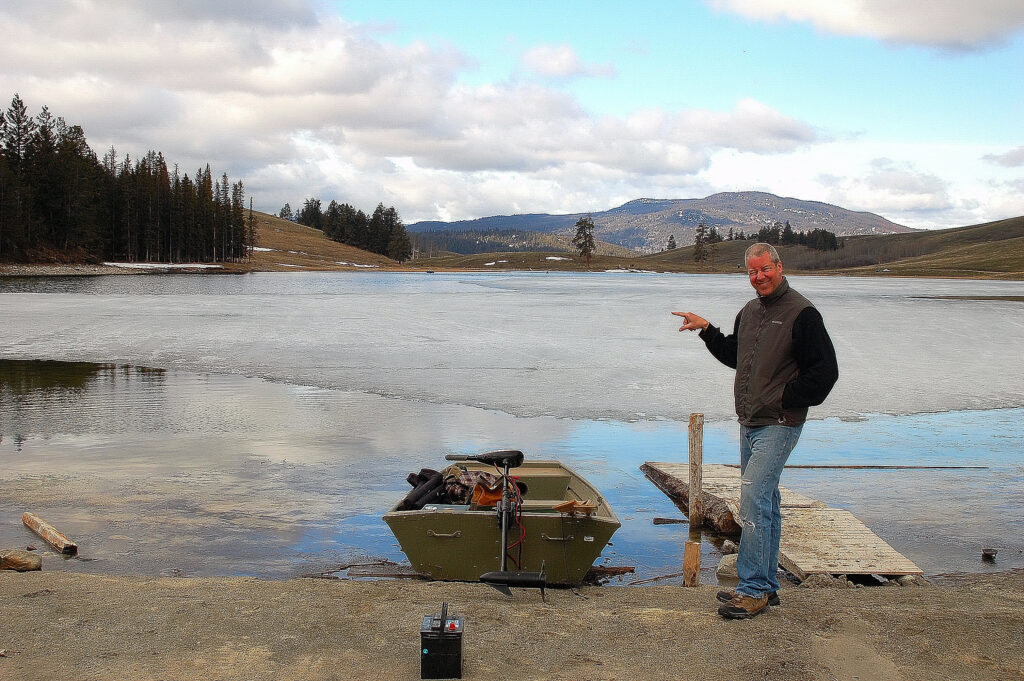
Tom another great article it’s been 34 years since you and I last fished together in B.C. can’t wait for our August trip.